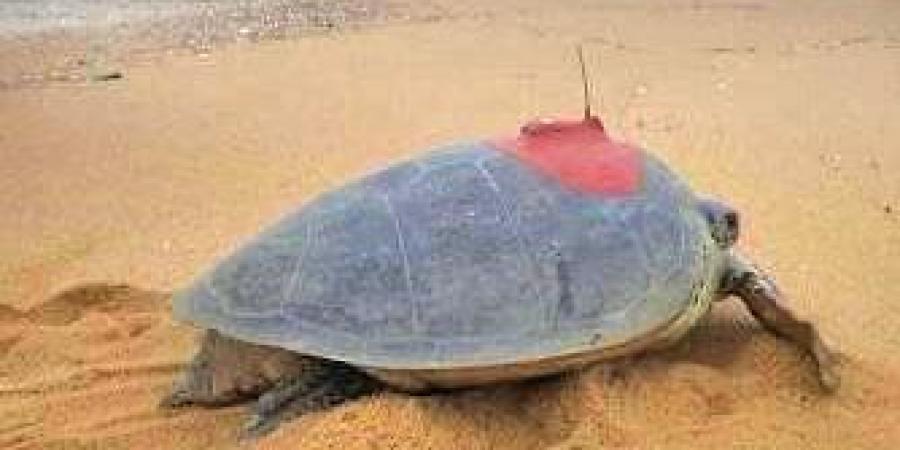Kendrapara: To gather detailed information about the migratory trajectory of Olive Ridley turtles, marine ecology, weather and other information, scientists of Wildlife Institute of India (WII) have decided to fit more advanced ‘Platform Transmitter Terminals’ (PTTs) or satellite transmitters on 30 Olive Ridleys this year at the three major nesting sites of Gahirmatha, Devi and Rushikulya river mouths.
This was announced by WII’s marine expert Dr Shivkumar Kuppuswamy.
He pointed out that transmission contacts through PTTs fitted on the turtles in 2017 had got disconnected within a year. “This year, more advanced PTTs will be used,” he added.
Notably, the first satellite telemetry study on Olive Ridley turtles was conducted in April 2001. The WII with the forest department and turtle biologist Jack Frazier of the Smithsonian Institute fitted PTTs on four turtles at Devi nesting beach for an online monitoring of migratory routes.
Of the four PTT-fitted turtles, only one migrated towards Sri Lanka. However, all the four turtles stopped transmitting after some months either due to technical problems or trawler-related mortality.
The second study was conducted in 2007. PTTs showed that the turtles undertook open-ocean migrations in the Bay of Bengal and exhibited migratory corridor between Sri Lanka and nesting sites along the Odisha coast.
To prevent turtle mortalities during mating and nesting season, the forest department has imposed a seven-month ban on fishing along the coast between November and May.
Last year, over 4.7 lakh turtles had thronged the nesting sites. Their number is expected to go up this year, if weather permits.
The satellite transmitters on turtles are meant to gather information on their movements for three years. PTTs have temperature sensors and surface time counters to indicate the proportion of time spent on the surface.
The battery of PTT is designed to last a year, if the turtle spends 30 per cent of its time on the surface. The data will be received, analysed and mapped.
Scientists and researchers from WII are already camping in the three nesting sites of the turtles. Olive Ridleys usually arrive in large numbers at these hubs for laying eggs from December to February. The PTTs will be fitted on the turtles during their mass-nesting.
Debasish Bhoi, the range officer of Gahiramatha marine sanctuary, said the WII will pick up 10 turtles each at Devi river mouth, Rusikulya river mouth and Gahiramatha sanctuary to be fitted with PTTs.
He added that PTTs have temperature sensors and surface time counters to indicate the proportion of time spent on the surface. Experts will also gather data about weather through PTTs.
PNN

